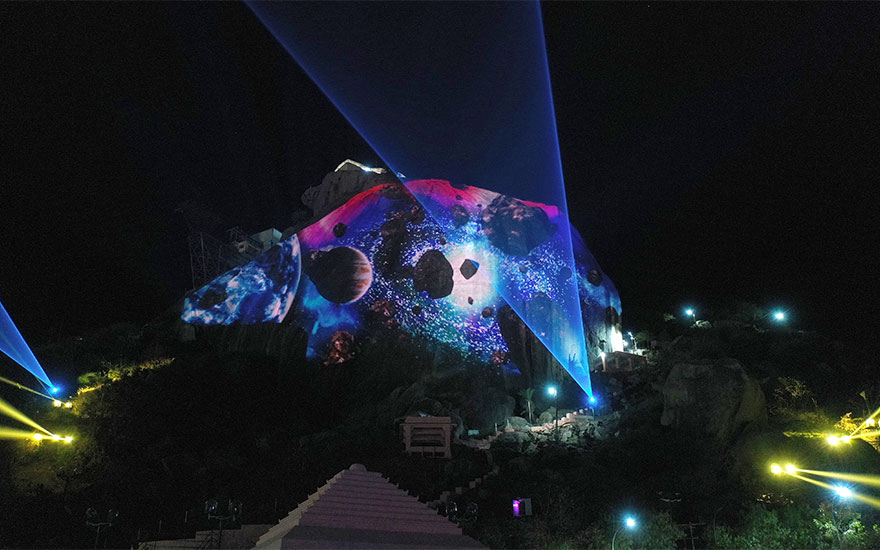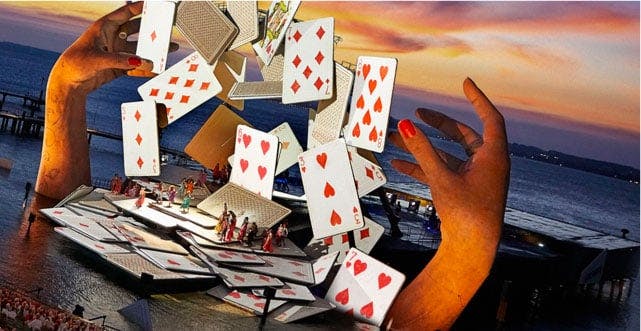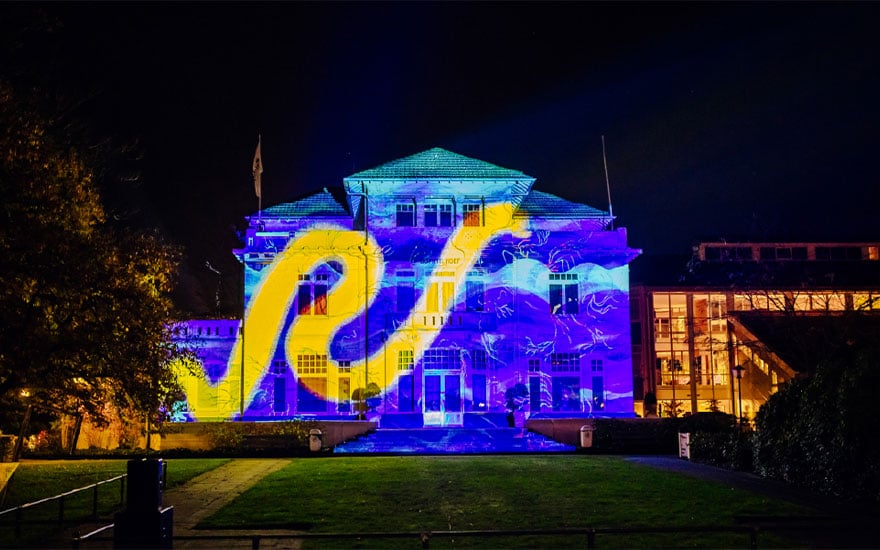Are you wondering how to start projection mapping? We’re here to help
Projection mapping, also known as video mapping, offers endless possibilities for creative expression – from stunning projection displays on historical buildings to engaging fans with an on-court projection mapping show at a basketball game.
If you’re considering incorporating projection mapping into your next project or event, read on. We’ll look at what it is, how it works, what technology is required, and some tips to ensure your project creates a memorable experience for guests.
What is projection mapping?
Let’s start with what projection mapping isn’t: it’s not just projecting an image onto a surface. Instead, projection mapping takes it one step further – it aligns projected visuals with the contours and features of the surface or object.
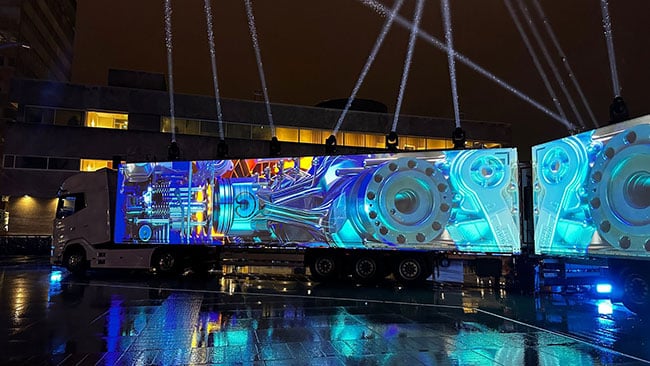
How does projection mapping work?
Projection mapping is art on a massive scale – the transformation of a familiar object or structure in a way that makes people stop and stare.
Great projection mapping projects are a successful combination of powerful ideas, the right technology, and expertise, paired with flat or complex surfaces and structures to create a great visual effect.
What technology do I need for projection mapping?
You can projection map with a single projector or with multiple projectors that are stacked and blended with the intention of creating a large, bright, and seamless image. The best way to ensure your content looks as intended is to make sure the projectors have enough brightness.
RGB pure laser projectors, which produce a color gamut that approaches the Rec. 2020 color space – closest to what our eyes can see – are extremely bright and are ideal for larger projection mapping projects. High brightness 1DLP® projectors are a great option for slightly smaller projects.
Experience is everything at GLOW 2023
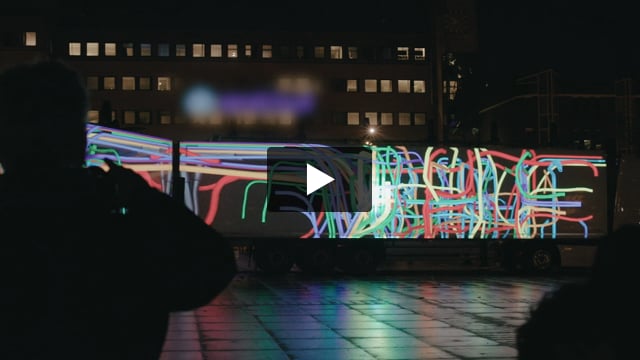
You can use media server software to play back content. Some software has useful additional features such as show control and timeline programming. And projection mapping software that uses an automated camera-based alignment and recalibration solution removes hours of work by automatically aligning, warping, and blending multi-projector arrays.
How to get started with your projection mapping project
Let’s dive into the details of projection mapping.
-
Define your objectives
The best technical and creative work invariably traces back to a well-considered and fully defined set of objectives, whether your goal is to generate interest on social media or increase tourism to a local landmark. You can also reflect clear objectives or themes in your content, for example, if you’re celebrating a milestone or promoting a brand.
-
Understand your audience
Consider the size, location, and viewing area of your audience relative to your project. Is there enough space for a large audience, or seating if necessary? Where will your audience be in relation to your projected content? And think about the composition of your audience to ensure that your content is appropriate.
-
Characteristics of your surface
The ideal projection mapping surface is lighter in color to allow the content to shine brightly when projected. Projecting on a darker surface will greatly impact the brightness of your content.
On certain surfaces, like a building, you may need to project on glass windows. In these situations, you may want to apply a special film to the windows. The film allows light to come through a window during the day but acts as a reflective projection surface. And for surfaces that are less than ideal – whether dirty, discolored, or non-uniform – you can use projection mapping software designed to compensate for imperfections in order to deliver a more consistent projected image.
-
Site conditions
There are many factors to consider before a projection mapping project. Will it be a one-time event or a permanent installation? If it’s a permanent outdoor installation, environmental factors like snow, rain, and wind can impact both the quality of your projected image and your ability to projection map year-round, so you may need to consider creating a pod or enclosure for the projector(s).
Also, think about where you’ll mount or position projectors in relation to the projection surface and in relation to the audience. Whether it’s an adjacent parking lot or the top of a neighboring building, it’s important to determine where to unobtrusively place projectors, as well as a power supply.
-
Content development
One of the most important aspects of projection mapping that’s often overlooked early in the project planning process. The complexity of your projection mapping content and its fidelity can greatly impact your overall budget and how long you’ll need to complete your project.
-
Timelines and budget
Projection mapping projects have been pulled off in as short as one week, but industry experts prefer to have much more time to fully deliver on objectives, as well as control costs.
The most ambitious projects can take a year or longer from the idea stage to the event launch. Larger or more complex projects could take years to ensure proper planning and approvals. Integrators and staging companies can often respond on relatively short notice, but what truly takes time is content creation. Mere minutes of motion graphics and video can require weeks or months of work to take through the idea stage, storyboard concepts, drafts, revisions, rendering, and testing.
Which brings us to the budget. Determining your budget from the outset will help shape the size, scope, and technology you choose.
High-brightness projectors able to illuminate larger surfaces can reduce the number of projectors projects require. Projection mapping software can save time and money by greatly simplifying previously labor-intensive tasks like alignment.
Why use projection mapping?
If you’ve read this far, you may be wondering, ‘Why use projection mapping?’ There are a few reasons. Projection mapping is a dynamic and novel attraction. Whether it’s to transform the set during a live theatrical performance, create artwork on water vapor, or change a historic church into a modern piece of artwork, it gets noticed.
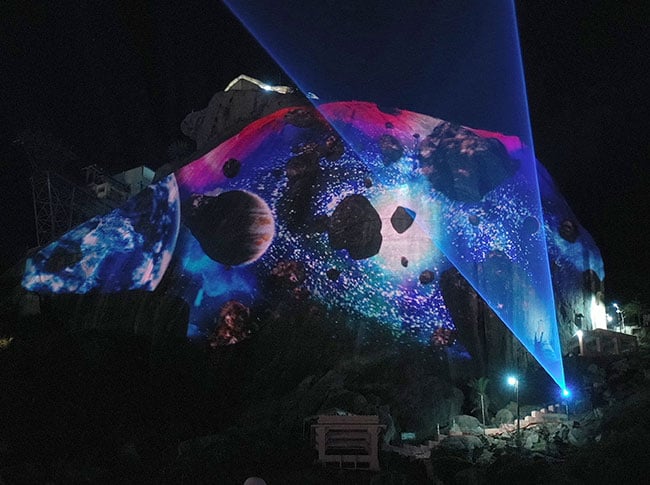
For example, Ambaji, India’s Gabbar Hill is lit up with RGB pure laser projectors for a 3D projection mapping show. The objective? To boost nighttime tourism by creating a mesmerizing light and sound show that highlights the history and cultural heritage of the Ambaji Temple, a sacred shrine located on Gabbar Hill.
Enhancing the fan experience for the Washington Capitals
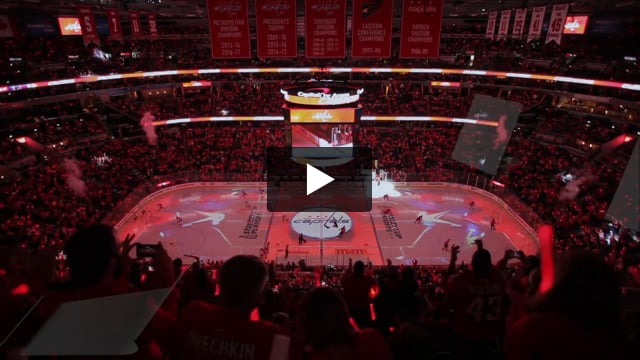
While the Houston Cougars and Washington Capitals use playing surface mapping to create a dramatic, on-court, pregame show to engage fans – whether they’re watching from the arena or at home.
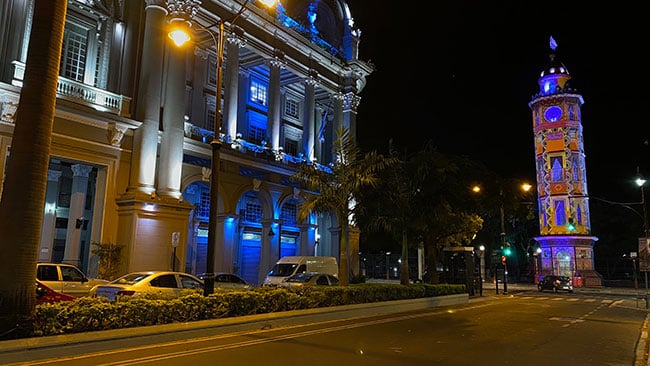
In Ecuador, the facades of six iconic buildings in Guayaquil, Ecuador’s largest city, were lit from top to bottom in a spectacular projection mapping show to commemorate the city’s bicentennial of independence. And in the Netherlands, our partner Sahara Benelux worked with artists at GLOW Festival to illuminate buildings around the city and a truck with RGB pure laser projection, delighting tourists and locals alike.
And for many venues, like landmarks and churches, projection mapping allows users to transform a large surface without affixing permanent physical components to a structure.
Projection mapping inspiration
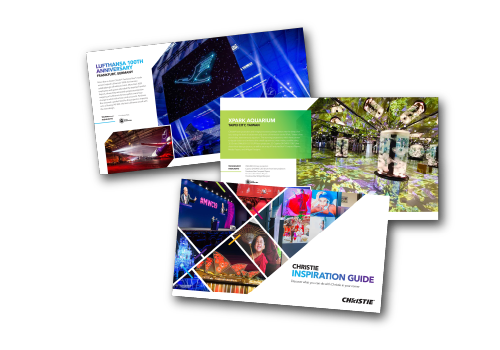
Are you looking for further inspiration? Take a look at some of our installations from around the world and explore our projection mapping and playing surface mapping solutions.
Download our new Inspiration Guide
You can also connect with us on social media to stay up to date on the newest projects and products.
Have any questions?


